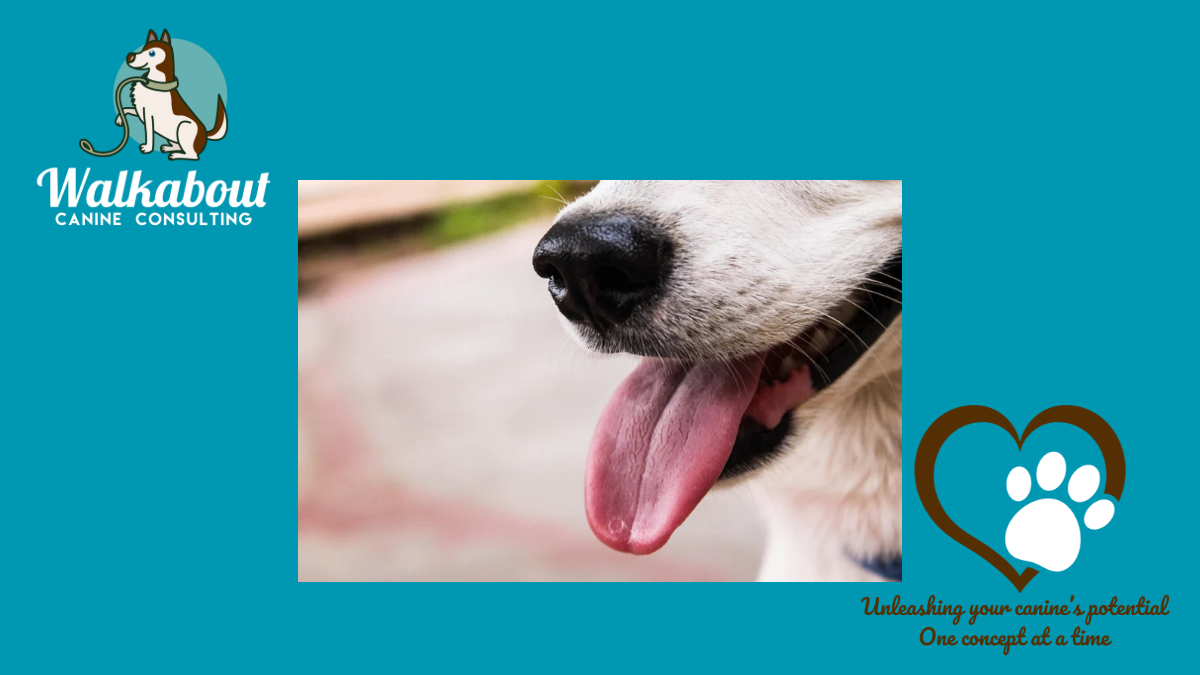Positive Dog Training & Behaviour Blog | Walkabout Canine Consulting
Unleashing your dogs potential, one concept at a time
Who are doing this for?

A discussion about public events for our dogs.
Who Are We Doing This For? Rethinking Our Dogs’ Comfort in Public Activities
As dog guardians, it’s natural to want to include our furry companions in every aspect of our lives, from holiday celebrations to social outings. But at what cost to their well-being?
At a recent local event where people could take photos with Santa, I couldn’t help but notice how many dogs were clearly uncomfortable. An unfamiliar hall, loud noises, the commotion of strangers and other dogs, and then a bearded man in a flamboyant outfit—it was a sensory overload for most dogs. Some were barking, pacing, and fidgeting, while others tried to retreat but were pulled forward, forced onto a stage they clearly didn’t want to be on. Their body language screamed discomfort, but they weren’t allowed to say “No.”
It was heartbreaking to see. Later, when someone voiced their concern on a community page, they were criticized, as though acknowledging a dog’s discomfort is somehow controversial.
This isn’t an isolated incident. I’ve seen similar scenes at vendor fairs, dog club events, and even community gatherings organized by animal welfare groups. Dogs are expected to engage in activities they don’t understand or enjoy, often for the sake of a photo or a ribbon. Even when positive reinforcement is used, it can sometimes cross a line—turning into a bribe rather than a motivator. When the dog isn’t truly enjoying the activity, the cookie becomes a means of coercion rather than a celebration of shared joy.
What Happens When We Ignore the “No”?
When we repeatedly force our dogs into situations where they feel overwhelmed, we risk damaging their trust in us. A dog that learns their boundaries aren’t respected may become less confident, more anxious, or even disengaged from activities they once enjoyed.
Dogs are incredibly perceptive. When we push them to perform or behave in ways they find uncomfortable, they don’t just “get over it.” Their stress builds over time, manifesting in behaviours like avoidance, reactivity, or withdrawal.
Who Is the Picture Really For?
If we’re honest, many of these activities are more for us than our dogs. The Santa photo is adorable, but is it worth the stress it causes? The same goes for competitive dog sports or public demonstrations—if our dogs aren’t truly thriving in these environments, we need to ask ourselves: Who benefits?
Some guardians made the thoughtful choice to skip the Santa stage altogether, opting instead to browse vendor stalls or simply enjoy the event without pushing their dogs. These are the guardians who are listening to their dogs’ needs and prioritizing their comfort over an Instagram post.
What Can We Do Differently?
1. Listen to Your Dog’s Body Language: Pay attention to signs of stress, like yawning, licking lips, cowering, leash pulling or turning away. If your dog is uncomfortable, respect their feelings and remove them from the situation.
2. Ask Yourself Why: Before involving your dog in an event or activity, consider who it’s really for. If it’s primarily for your enjoyment, consider whether your dog would truly enjoy the experience.
3. Build Confidence Gradually: If you want your dog to participate in events, work on building their confidence in low-pressure environments first. Practice desensitization and counter-conditioning with confidence building exercises to help them feel safe.
4. Provide Opt-Out Options: Give your dog the choice to say “No.” This might mean offering them the chance to retreat or sit out an activity entirely. Maybe your dog just needs to sit, process and watch for future possibilities of participating.
5. Reassess Goals: In competitive settings, evaluate whether the activities align with your dog’s personality and natural inclinations. Just because a dog can perform doesn’t mean they enjoy it.
A Final Thought
Including our dogs in our lives is a beautiful thing, but it must be done with empathy and understanding. Let’s make sure the memories we create are joyous for everyone involved, including our dogs. Trust and mutual enjoyment are far more valuable than a photo or a ribbon.
By respecting our dogs’ boundaries and listening to their needs, we honour the unique bond we share with them. Let’s commit to doing better—for their sake, not ours.
Categories: : advolescent dogs, aversive dog training, dog behavior, dog body language, dogtraining, dogtrainingtip
 Sylvia Koczerzuk Koczerzuk
Sylvia Koczerzuk Koczerzuk 
